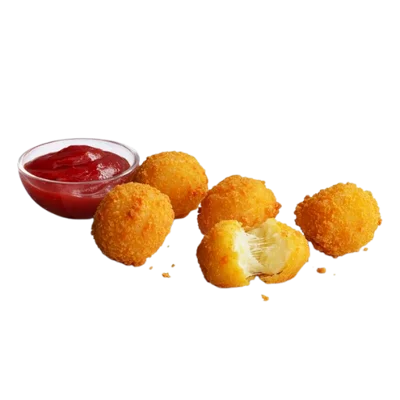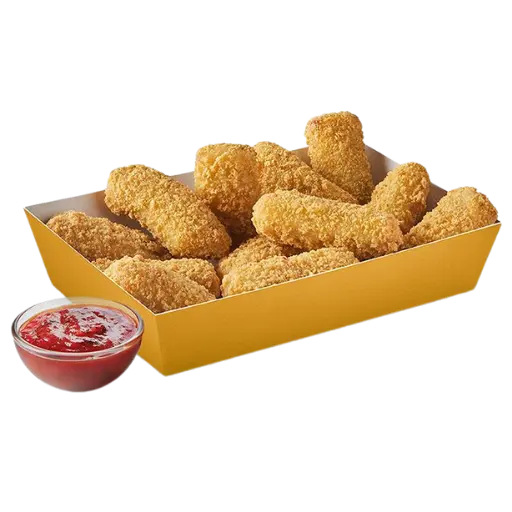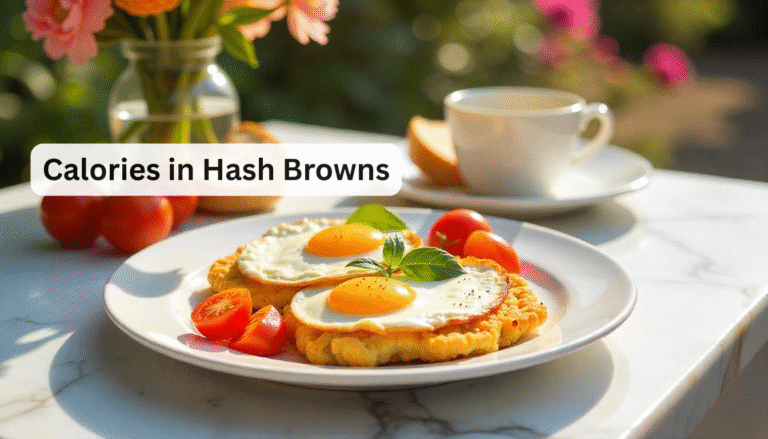Liquid Vegetable & Dairy Fat Blend Recipe: Easy & Healthy
Liquid vegetable & dairy fat blend might sound like a modern food innovation, but it’s deeply rooted in culinary tradition across many cultures. Used widely in both sweet and savory dishes, this creamy blend of plant-based oils and dairy fats offers the richness of butter with the flexibility of liquid oils. It’s a popular choice for baking, cooking, and spreading—perfect for everyday meals, festive baking, or when you want a healthier butter alternative.
What makes this blend unique is its balance: it combines the creamy flavor of dairy with the heart-healthy qualities of vegetable oils. In many homes, especially across Europe and North America, this fat blend has replaced traditional butter for its smooth texture, easy mixing, and longer shelf life.
I first discovered this blend while experimenting with healthier baking options during a holiday season. It gave my cookies a perfect golden color and a lighter mouthfeel—something butter alone couldn’t do. Since then, it’s become a staple in my kitchen.
Ingredients
Here’s what you need to make a basic liquid vegetable & dairy fat blend at home:
- 1 cup vegetable oil (sunflower, canola, or olive oil – for heart-healthy fat and smooth texture)
Substitute: Grapeseed or avocado oil for a slightly nutty flavor. - 1/2 cup melted unsalted butter (for rich, creamy flavor and traditional dairy taste)
Substitute: Ghee or plant-based butter for a lactose-free version. - 1/4 cup milk or cream (to add moisture and emulsify the mix)
Substitute: Use almond or soy milk for a dairy-free blend. - 1/4 teaspoon salt (enhances flavor and balance)
Optional: Skip for a low-sodium version. - 1/2 teaspoon lecithin (optional) – helps emulsify the mixture and improve texture
Optional: Can be omitted if not available; the blend may separate slightly, just shake before use.
Instructions
Preparation

- Gather your tools: You’ll need a mixing bowl, whisk or blender, and a jar or container with a lid for storage.
- Melt the butter over low heat. Do not boil.
- Let the butter cool slightly, just enough to be warm—not hot.
Cooking / Mixing
- In a mixing bowl or blender, combine the vegetable oil, melted butter, milk or cream, and salt.
- If using, add the lecithin.
- Whisk or blend until the mixture is smooth and creamy. This should take about 1–2 minutes.
- Pour into a clean container or glass jar with a lid.
Finishing
- Store in the fridge for up to 2 weeks. It will remain soft and spreadable.
- Shake before use if it separates slightly.
- Use it in baking, spreads, or frying.
- For garnish, drizzle over warm vegetables or toast. It pairs well with herbs like parsley or chives.
Serving Suggestion: Spread on toast, mix into mashed potatoes, or use in cake batter for extra fluffiness.
Expert Tips
- For baking, use a 1:1 ratio when replacing butter with this blend.
- Best storage: Keep refrigerated but not frozen—it maintains a better texture.
- Diet-friendly: Use plant-based milk and butter for a vegan-friendly or dairy-free version.
- Meal prep idea: Make a larger batch and divide into jars—perfect for quick breakfasts or snacks.
Common Mistakes to Avoid
- Using hot butter – This can cause separation. Tip: Let it cool before mixing.
- Skipping emulsifiers – Without lecithin or milk, the blend may separate too quickly. Tip: Shake well before use.
- Using flavored oils – Strong oils (like sesame) can overpower the flavor. Tip: Stick to neutral or light-tasting oils.
- Over-blending – Can cause air bubbles. Tip: Mix just until smooth.
Liquid Veg & Dairy Fat Blend: Honest Review
In this review, we explore the unique combination of vegetable oils and dairy fats found in liquid vegetable & dairy fat blends. This ingredient is gaining popularity due to its smoother consistency, versatile use in baking and cooking, and heart-healthier qualities compared to traditional butter. It provides the creamy richness of butter but is easier to handle and store. We dive into its benefits, drawbacks, and how it compares to other fat blends available in the market. Whether you’re replacing butter for health reasons or looking for a better alternative in your recipes, this review provides all the details you need to make an informed decision.
Liquid Veg & Dairy Fat Blend Talk on Reddit
Reddit is full of discussions and debates about the liquid vegetable & dairy fat blend, where users share their experiences and tips. From health-conscious individuals to food enthusiasts, many are intrigued by the combination of plant-based oils and dairy fats. Reddit threads offer firsthand insights, with some users sharing how they use the blend in various recipes—be it for baking, frying, or as a butter alternative. Join the conversation to learn how different people incorporate this ingredient into their diets and to discover new ways to make the most of this unique fat blend.
McDonald’s Sausage: Calorie Breakdown
The McDonald’s sausage is a beloved item for breakfast, but how does it stack up in terms of calories? This breakdown takes a closer look at the nutritional content of a McDonald’s sausage patty. With a focus on the number of calories, fats, and protein, we explore how it fits into a balanced diet. Whether you’re counting calories or simply curious about what goes into your breakfast, this analysis will help you make more informed choices when ordering at McDonald’s. Find out how the sausage compares to other breakfast meats in terms of nutritional value.
Sausage McMuffin w/ Egg: Protein Facts
The Sausage McMuffin with Egg is a popular breakfast choice, offering a satisfying mix of protein and carbs. But how much protein does it actually provide? In this section, we dive into the protein content of the McMuffin with egg, helping you understand how this meal can fuel your morning. We also explore the balance between protein, fats, and carbs, providing a well-rounded nutritional perspective. Whether you’re focused on maintaining muscle mass or just looking for a solid start to your day, this breakdown gives you the full picture of the protein content in this delicious breakfast sandwich.
McDonald’s McMuffin: Full Nutrition Info
If you’re curious about the complete nutritional profile of McDonald’s McMuffin, this section breaks down everything you need to know. From calorie count to fat and sodium content, we provide a comprehensive look at the McMuffin’s nutritional information. This guide also includes details on the presence of essential vitamins and minerals, as well as how the McMuffin fits into your daily caloric intake. Whether you’re watching your diet or simply want to be more mindful of what you’re eating, understanding the McMuffin’s nutrition can help you make better meal choices when visiting McDonald’s.
Sausage McMuffin w/ Egg: Calorie Guide
The Sausage McMuffin with Egg is an indulgent breakfast treat, but how many calories does it actually pack? This guide gives you a complete breakdown of the calorie content of the sandwich, including the sausage, egg, cheese, and muffin. We look at the calories from fat, protein, and carbs to provide a well-rounded understanding of its impact on your diet. Whether you’re managing your calorie intake or just curious about what you’re consuming, this guide is the perfect resource for anyone looking to keep track of their breakfast calories at McDonald’s.
McMuffin w/ Egg: Current Price at McD’s
The price of a Sausage McMuffin with Egg can vary depending on the location, but here we provide the most up-to-date pricing available at McDonald’s. Whether you’re planning to make a quick breakfast run or looking to compare prices, this section offers valuable information. We also discuss any variations that may impact the price, such as regional differences or special offers. With this pricing guide, you can be sure to know exactly how much to expect to pay when you crave that classic Sausage McMuffin with Egg.

Sausage Egg McMuffin: Nutrition Facts
The Sausage Egg McMuffin is a McDonald’s classic breakfast sandwich, but what exactly are the nutrition facts? In this section, we break down the sandwich’s nutritional content, including calories, fat, protein, and carbohydrates. We also look at how the Sausage Egg McMuffin fits into a balanced diet and whether it’s a good choice for those on specific dietary plans. If you’re looking for a filling breakfast or want to make informed choices about your meal, this detailed nutritional breakdown will help you understand what you’re eating when you opt for this popular McDonald’s item.
Frequently Asked Questions
What’s liquid vegetable and dairy fat blend?
Liquid vegetable and dairy fat blend is a combination of plant-based oils and dairy fats used in cooking and baking. It offers a smoother consistency compared to traditional butter and is often seen as a heart-healthier alternative. The blend is designed to provide the creamy richness of butter while being easier to handle and store.
What is the healthiest McDonald’s breakfast?
McDonald’s offers several breakfast options, and the healthiest choice depends on your dietary goals. Options like the Egg McMuffin, Fruit & Maple Oatmeal, and the Egg White Delight McMuffin are lower in calories and fat compared to other items like the Sausage McMuffin. It’s best to choose items with high protein and fiber for a balanced meal.
Why is it called a McMuffin?
The McMuffin is named after the English muffin, which is the bread base used in the sandwich. McDonald’s added their twist by combining it with different ingredients such as eggs, cheese, and meats to create a popular breakfast item. The name “McMuffin” is a brand-specific term that highlights the use of the English muffin as the sandwich base.
Is McDonald’s sausage made of pork or beef?
McDonald’s sausage is made from pork. It’s a key ingredient in many of their breakfast sandwiches, including the Sausage McMuffin and Sausage Biscuit. The sausage is seasoned with a blend of spices to give it a distinctive flavor.
How many calories are in a Sausage McMuffin?
A Sausage McMuffin from McDonald’s contains approximately 400 calories. This number can vary slightly depending on the location and any modifications made to the sandwich. It’s a good option for those seeking a hearty breakfast, but it’s best to consider the total nutritional content if you’re monitoring your calorie intake.
What makes a McMuffin different from a regular muffin?
A McMuffin is typically an English muffin, which is a type of round, flat bread. Unlike a regular muffin, which is usually sweet and baked in a muffin tin, the McMuffin is savory and used as the base for breakfast sandwiches. Its slightly crisp texture and ability to hold fillings make it ideal for the sandwiches served at McDonald’s.
What is the nutritional content of the Egg McMuffin?
The Egg McMuffin contains around 300 calories, with 12 grams of protein, 12 grams of fat, and 30 grams of carbohydrates. It’s one of the healthier breakfast options at McDonald’s, especially when compared to sandwiches with sausage or bacon. It also provides a good source of vitamins and minerals from the egg and cheese.
Can I make a Sausage McMuffin at home?
Yes, you can make a Sausage McMuffin at home by using an English muffin, a sausage patty, a cooked egg, and a slice of cheese. You can also customize it by adding other ingredients such as vegetables or using a different type of cheese. Homemade versions give you more control over the ingredients and can be healthier if you choose leaner meats or low-fat cheese.
Are McDonald’s breakfast items available all day?
Currently, McDonald’s breakfast items are only available during breakfast hours, typically from 5 a.m. to 10:30 a.m., depending on the location. However, some McDonald’s locations have tested all-day breakfast, so it’s always worth checking with your local restaurant for availability.
Is McDonald’s breakfast served on weekends?
Yes, McDonald’s serves breakfast on weekends during the same hours as weekdays, typically from 5 a.m. to 10:30 a.m. However, hours may vary depending on the location. It’s always a good idea to check with your local McDonald’s if you’re craving breakfast outside of these hours.
Conclusion
Making your own liquid vegetable & dairy fat blend is simple, budget-friendly, and healthier than many store-bought options. It’s perfect for anyone looking for an easy recipe that works for baking, spreading, or light frying. Whether you’re trying to eat better or just want a smooth, creamy butter alternative, this blend is a must-try.
Have you made this blend before? Share your version in the comments below! If you’re looking for more easy recipes, healthy cooking tips, and homemade butter alternatives, check out the other posts on our site.







